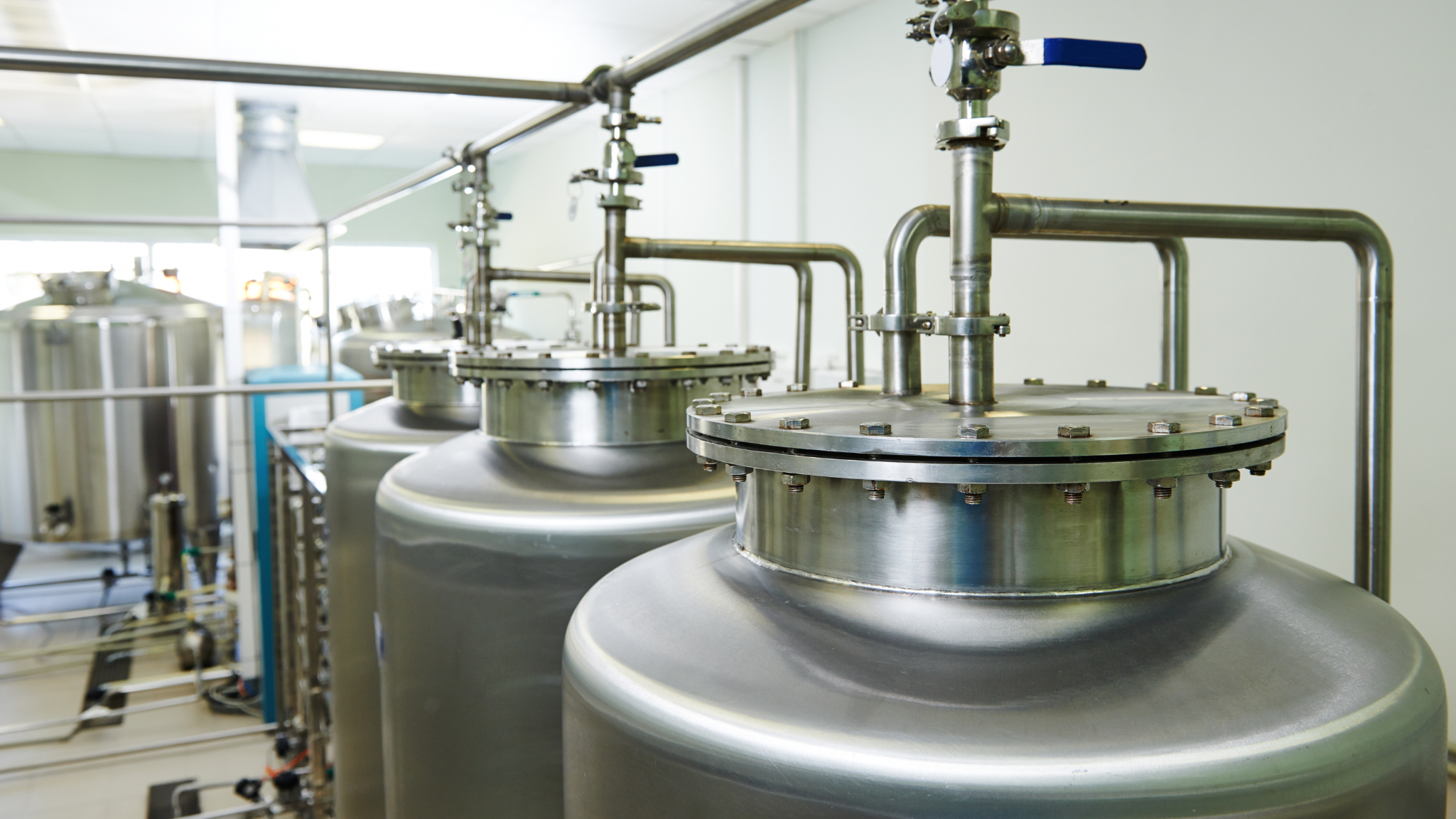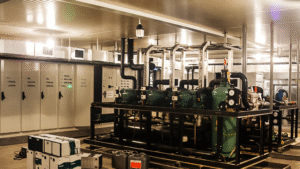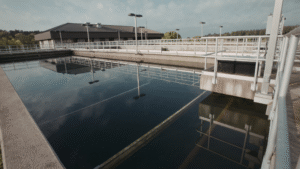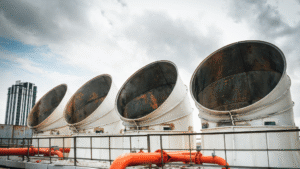Legionella bacteria are a significant concern for building water systems because they can cause serious illness, including Legionnaires’ disease. These bacteria thrive in warm, stagnant water, and once aerosolized in water droplets, they present a risk to public health. For facility managers, engineers, and operators, addressing this challenge is about safeguarding the people who rely on safe drinking water and well-maintained infrastructure.
A practical and effective solution begins with a chemistry-first approach to legionella prevention. By focusing on water treatment methods that control bacterial growth at the source, facilities can reduce risks more reliably than through management practices alone. While water management programs, flushing routines, and proper temperature settings all play important roles, the use of chemical strategies like chlorine dioxide, sodium hypochlorite, and mixed oxidants provides the critical disinfectant residual needed to keep systems safe.
This article explores the science behind Legionella risks, the conditions that promote bacterial growth, and how chemical strategies can be integrated with temperature control and maintenance practices. It also highlights how ETI’s expertise in chemical blending helps facilities build long-term, chemistry-driven solutions for safer water systems.
Understanding Legionella and Its Risks
Legionella bacteria are naturally occurring microorganisms that thrive in aquatic environments, particularly in warm water conditions. When they colonize building water systems, they can multiply rapidly and become a source of contamination. The bacteria spread primarily through water droplets released from showers, faucets, cooling towers, decorative fountains, and even hot tubs. Inhalation of these contaminated droplets can lead to Legionnaires’ disease, a severe form of pneumonia, as well as Pontiac fever, a milder flu-like illness.
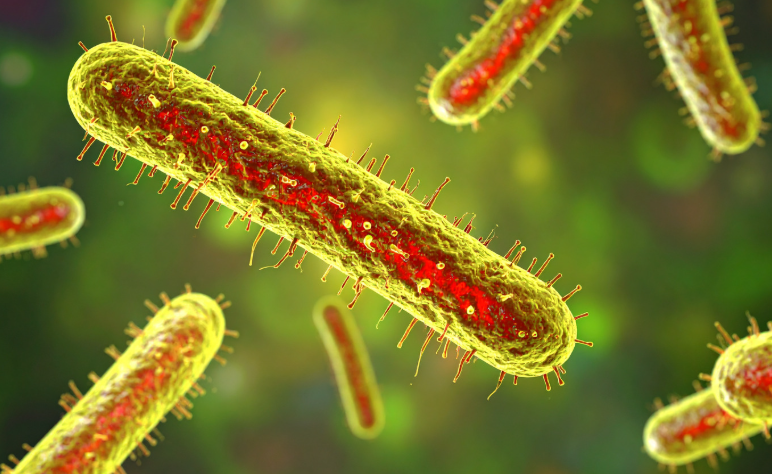
While most healthy people exposed to Legionella may not become ill, the risk is much higher for those with compromised immune systems, smokers, or individuals with chronic lung disease. In healthcare settings, where vulnerable populations are concentrated, the consequences of legionella contamination can be particularly severe. This makes prevention a vital part of disease control and public safety.
The conditions that allow bacterial growth are common in modern potable water systems. Facilities that rely on cold water storage tanks, hot water tanks, or extensive plumbing networks may experience standing water and inconsistent water temperature. These factors create the perfect environment for legionella bacteria to multiply. Once present, they can form colonies within biofilm, making them more resistant to traditional disinfection methods.
Key Factors That Promote Legionella Growth
- Water Temperature: Legionella bacteria multiply most effectively in warm water environments, particularly between 20°C and 45°C. This range is common in many building water systems, including hot water cylinders, cold water tanks, and distribution temperatures that are not properly maintained. If hot and cold water temperatures are not carefully controlled, facilities face an increased risk of creating environments that support legionella growth.
- Stagnant and Standing Water: Water that does not flow regularly, such as in dead legs of a plumbing system or oversized pipes, can quickly become a breeding ground for bacterial growth. Stagnant water allows disinfectant levels to dissipate, leaving no protective barrier against contamination. Older infrastructure in industrial and healthcare facilities often contributes to higher water age, which further promotes legionella growth.
- Biofilm Formation: When conditions are favorable, Legionella often colonize within biofilm formation on surfaces of water system components. Biofilms protect bacteria from disinfectants, making them more difficult to eradicate. Even when disinfectants like chlorine are present, they may not penetrate biofilm effectively. Over time, this allows bacteria to multiply and release cells back into the potable water supply, threatening public health.
- Environmental Conditions: External and operational factors also play a role. Poor water quality, insufficient proper maintenance, and fluctuating environmental conditions can all contribute to contamination. Without consistent monitoring and water management programs, facilities are at higher risk of experiencing Legionella outbreaks.
A Chemistry-First Strategy for Legionella Prevention
One of the most effective tools in legionella prevention is maintaining a consistent disinfectant residual throughout the entire plumbing system. In well-designed potable water systems, disinfectants remain present from the point of entry all the way to outlets. However, in many buildings, residuals diminish due to standing water or water age, leaving occupants vulnerable. A chemistry-first approach ensures that disinfectants remain at sufficient levels to provide ongoing protection.
Sodium Hypochlorite and Chlorine
Sodium hypochlorite, commonly known as free chlorine, is widely used in municipal systems and many facilities. While it is cost-effective and accessible, it has limitations. Chlorine is less effective against biofilm formation, where most legionella bacteria survive. Although useful for general disinfection, relying on chlorine alone is often insufficient for long-term legionella control.
Chlorine Dioxide for Enhanced Control
Chlorine dioxide is increasingly recognized as a superior option in water treatment for legionella contamination. Unlike chlorine, it penetrates biofilms more effectively, reducing bacterial colonies and helping to control legionella at the source. Its stability in distribution temperatures and ability to persist in complex plumbing systems make it a powerful tool for facilities that require stronger prevention measures.
Mixed Oxidants and Advanced Chemistry
Beyond traditional chemicals, mixed oxidant solutions combine disinfectants to improve overall effectiveness. These blends attack bacterial growth on multiple fronts, reducing resistance and minimizing the chance for Legionella to rebound. For certain facilities, advanced oxidation processes may also provide added protection, though they require precise water management to be sustainable.
Integration with Water Management Programs
Chemistry alone is not enough. To truly reduce legionella growth, chemical disinfection must be part of a broader strategy that includes water management programs, regular water samples, and proper maintenance of systems. When paired with monitoring tools and engineering controls, chemical treatment ensures a resilient, long-term defense.
A chemistry-first strategy does not dismiss the importance of design, flushing, and temperature control, but it acknowledges that chemistry provides the foundation for reliable and measurable prevention.
Balancing Temperature Control and Safety
Temperature is one of the most critical variables in legionella prevention. Even when chemical disinfectants are present, if hot and cold water are not maintained within safe ranges, conditions can still favor bacterial growth. Achieving the right balance requires both technical adjustments and vigilant monitoring. Two areas, in particular, need attention: hot water systems and cold water systems.
Hot Water Systems
Maintaining proper hot water temperatures is essential for controlling bacterial growth. Hot water tanks and hot water cylinders should be kept at or above 60°C to ensure that Legionella cannot survive. However, water that is too hot at the point of delivery can create a scald risk for occupants. To manage this, facilities often use thermostatic mixing valves or thermostatic mixer valves, which blend hot and cold water to safe levels at outlets. These devices allow systems to achieve effective temperature control without compromising safety.
Cold Water Systems
Just as hot water must be kept above a safe threshold, cold water storage requires careful attention. Cold water tank temperatures should remain below 20°C. If cold water systems are not properly designed or insulated, water can enter the warm water range that helps promote legionella growth. Regular monitoring and ensuring that tanks are properly maintained are key preventative measures.
Distribution Temperatures and Mixing
Balancing hot and cold water in building water systems is not only about safety but also about prevention. Ensuring proper distribution temperatures reduces the chance of bacterial growth and supports consistent disinfectant effectiveness. When operators install thermostatic mixing valves correctly, they can minimize fluctuations, protect water quality, and reduce legionella growth.
Balancing Temperature Control and Safety
Temperature is one of the most critical variables in legionella prevention. Even when chemical disinfectants are present, if hot and cold water are not maintained within safe ranges, conditions can still favor bacterial growth. Achieving the right balance requires both technical adjustments and vigilant monitoring. Two areas, in particular, need attention: hot water systems and cold water systems.
Hot Water Systems
Maintaining proper hot water temperatures is essential for controlling bacterial growth. Hot water tanks and hot water cylinders should be kept at or above 60°C to ensure that Legionella cannot survive. However, water that is too hot at the point of delivery can create a scald risk for occupants. To manage this, facilities often use thermostatic mixing valves or thermostatic mixer valves, which blend hot and cold water to safe levels at outlets. These devices allow systems to achieve effective temperature control without compromising safety.
Cold Water Systems
Just as hot water must be kept above a safe threshold, cold water storage requires careful attention. Cold water tank temperatures should remain below 20°C. If cold water systems are not properly designed or insulated, water can enter the warm water range that helps promote legionella growth. Regular monitoring and ensuring that tanks are properly maintained are key preventative measures.
Distribution Temperatures and Mixing
Balancing hot and cold water in building water systems is not only about safety but also about prevention. Ensuring proper distribution temperatures reduces the chance of bacterial growth and supports consistent disinfectant effectiveness. When operators install thermostatic mixing valves correctly, they can minimize fluctuations, protect water quality, and reduce legionella growth.
Read our related blog: Monitoring Systems and Chemical Control in Water Treatment
ETI’s Role in Supporting Chemistry-Driven Legionella Prevention
ETI has been supporting facilities with advanced chemical blending solutions since 1986, and its approach to legionella control reflects that same commitment to long-term client success. Recognizing that Legionella bacteria thrive in complex building water systems, ETI delivers tailored programs that address risks at every stage, from biofilm formation to maintaining consistent disinfectant residuals.
Through its Legionella Treatment: Protecting Your Water Systems from Harmful Bacteria services, ETI provides practical guidance on identifying system vulnerabilities and applying proven solutions. These include oxidizing and non-oxidizing biocides such as chlorine dioxide and sodium hypochlorite, high-efficiency shock treatments, and enzyme-based dispersants that break down biofilm. Each solution is designed to reduce legionella growth, improve water quality, and support compliance with CDC, EPA, OSHA, and ASHRAE standards.
In addition, ETI’s services extend beyond products. The company offers risk assessments, the development of water management plans, and training programs like the ETI Bootcamp and CWT Certification support. These services empower operators, engineers, and distributors in Pennsylvania and Ohio to keep potable water systems safe, properly maintained, and in line with evolving health regulations.
By partnering with ETI, facilities gain more than chemicals — they gain a trusted resource for legionella prevention, ongoing education, and chemistry-driven water safety. Learn more about ETI’s comprehensive solutions for Legionella control and prevention.
Frequently Asked Questions (FAQs)
What role do cold water systems play in Legionella prevention?
Cold water systems must be kept below 20°C to prevent conditions that promote legionella growth. Poor insulation or oversized cold water storage tanks can raise cold water tank temperatures, increasing the risk of bacterial growth. Regular monitoring and proper maintenance help reduce these risks.
How often should water samples be collected?
Routine water samples should be taken as part of ongoing water management programs. The frequency depends on facility type and local health department regulations. Healthcare facilities and senior living centers often require more frequent testing to ensure compliance and disease control.
Can water softeners or thermostatic mixing devices impact Legionella growth?
Yes. Poorly maintained water softeners can harbor biofilm and support legionella growth. Likewise, improperly installed or malfunctioning thermostatic mixing valves can allow water to sit in the warm water range, increasing risks. Always install thermostatic mixing valves correctly and include them in preventative measures.
What are sentinel outlets and why are they important?
Identify sentinel outlets like shower heads and distal taps for regular monitoring. Testing these points helps detect legionella contamination early in building water systems, providing a more accurate picture of system-wide risks.
How does the health department regulate Legionella prevention?
Agencies like the CDC, EPA, and OSHA provide guidelines on control and prevention, while local authorities may mandate water management plans. Compliance is critical for public facilities and air conditioning engineers managing premise plumbing.
Why is it important to monitor for Legionella periodically?
Even in properly maintained systems, legionella periodically reemerges due to standing water, biofilm formation, or environmental conditions. Ongoing testing ensures early detection, protects public health, and helps facilities remain compliant with regulations.

